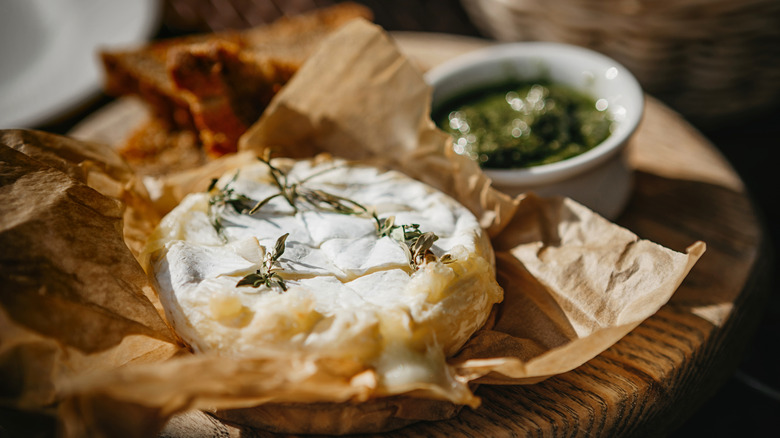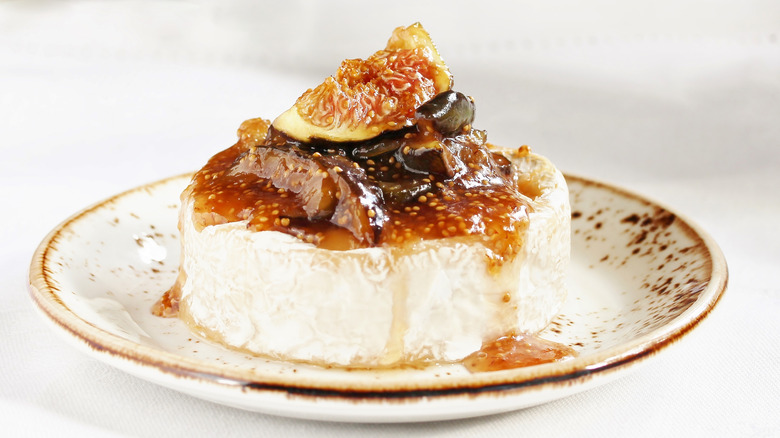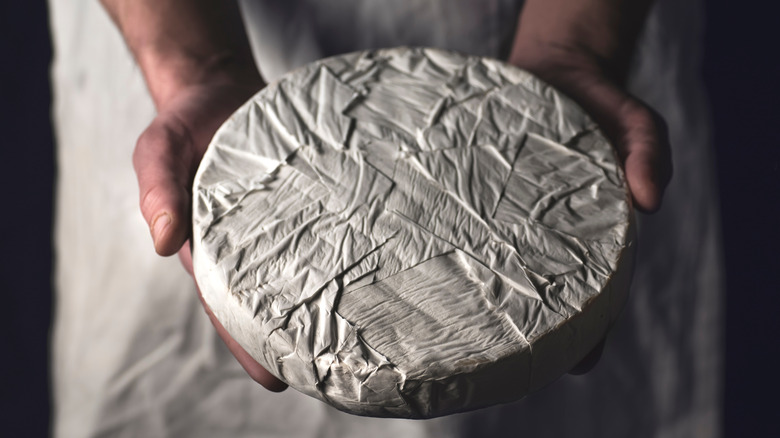What You Need To Know Before Attempting To Bake Camembert Cheese
If you're tired of your usual appetizers, we'd like to introduce you to camembert cheese. Camembert is a soft-ripened cheese from Northern France, and it's similar in style to brie but has unique properties that set it apart.
One of the best ways to serve camembert cheese is to bake it. The cheese melts, turns creamy, and can work just as well as a cheesy dip, spread, or underrated burger topping. Baking camembert is also easy, but it does require some preparation and know-how to pull it off.
The main obstacle is that camembert needs a suitable baking vessel. Camembert cheese can get excessively runny when baked, so you'll need something to contain it. Most rounds come packaged in a small wooden box with a plastic wrapper on the cheese itself. If you remove that plastic, you can return the cheese to the wooden box and use that as your baking vessel.
Just make sure to check how the box is sealed. If it's sealed with staples, it should hold up, but if you can't figure out what holds it together, it may be glue that will melt in the oven. To be safe, you should wrap the entire box and cheese in aluminum foil to hold things together. You can also use a proper cheese baker or oven-safe dish as an alternative.
How to flavor your baked camembert
Another critical key to properly baking your camembert is to vent the cheese's rind with a knife. Not only will this release steam and keep it from overbaking, but it also opens the door to flavoring your camembert. Those small holes will allow any toppings or sauces that you add to seep into the cheese and infuse it with flavor as it bakes.
You can add anything that you'd like to flavor your camembert. It typically has a deep earthy flavor that can be accented by savory, sweet, or spicy toppings. We like our baked camembert topped with tarragon and horseradish and served with a side of mulled port wine. The BBC recommends flavoring it with chopped nuts and honey, wild mushrooms, or candied bacon with pickled chestnuts. You can keep it simple by drizzling on some honey or adding your favorite spice mix, like za'atar.
Differences between camembert and brie cheeses
Another popular cheese that's well suited to baking is brie. Both kinds of cheese are similar; they're French cheeses with the same bloomy rind.
One of the most remarkable differences between these two, however, might be their flavors. Brie is a creamy, rich, delight that almost resembles butter once baked, and camembert typically has a much more earthy flavor. This is courtesy of the lactic starters that camembert makers add multiple times during production. In contrast, brie only gets a single starter added at the beginning and is far milder than the potent flavors of camembert.
Brie won't have the same creaminess either. It is made by adding cream to raw cow's milk, which raises the butterfat content, typically making it runnier. These cheeses are also sold in triple-cream versions, which increases the butterfat content even more. If you are looking for a cheese with camembert's earthy flavors and the creaminess of a brie, then a triple cream camembert is likely your best option.


